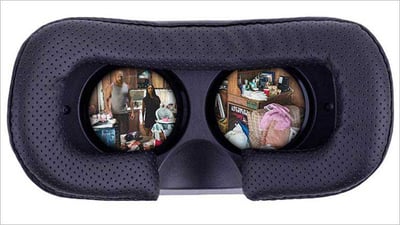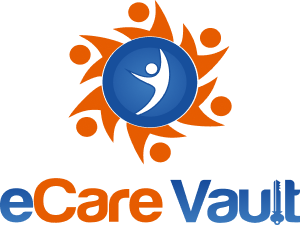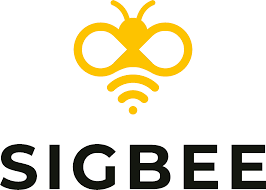The current workforce crisis facing the helping professions, including all programs within human services, unfortunately isn’t going away any time soon. Workforce issues will be top of mind for both local and state human services agencies for the next several years, as well as a priority communicated by federal partners. As we come out of Social Work Month with a renewed focus on empowering workers, what better time to talk about how technology is supporting the workforce today?
At Northwoods, we take pride in developing tools that help ease the day-to-day burdens on caseworkers and social workers across the country so they can focus on clients and families. However, we know that’s just one piece of the puzzle. A lot of today’s most impactful technology is targeted toward supporting workers themselves. This is critical since a happy and stable workforce has long been shown to have dramatic positive impacts on the citizens they serve.
As we’ve discussed previously, there are many causes of recruitment and retention woes impacting human services agencies and it requires a multi-faceted approach to solve the workforce crisis. Technology does have a role to play and can be leveraged as a part of the solution. As workforce stabilization, safety culture, and worker wellness have become front-and-center concerns for leaders and policy makers, several innovative tools have emerged that aim to support workers’ training, professional development, and well-being. We highlight a few of our favorites in each category below.
![]()
Workforce Training
One of the strongest predictors for retention is a well-prepared and supported workforce. Over the past several years, many innovative tools have entered the market to help enhance training, documentation, and overall clinical quality assurance for human services.
 Lyssn
Lyssn
Over the last 10-15 years, there has been much attention paid to the increased adoption of evidence-based best practice methodologies within human services. One example is Motivational Interviewing (MI), the clinical benefits of which have been documented across hundreds of thousands of treatment encounters and settings in peer reviewed academic literature.
Historically, implementing the initial and especially ongoing training in a methodology such as MI can be a lengthy, cumbersome, and expensive process for agencies to scale across an entire, often geographically distributed workforce. As a child welfare social worker, I recall attending a multi-session bootcamp, recording interviews with peers and clients, and then submitting them for manual, time-intensive paper hand-scoring by our instructor. This was essentially the only way to receive feedback and the process had to be replicated over and over again.
Lyssn is an intuitive, AI-powered platform created to assist in the rollout and quality tracking of gold standard modalities like MI and Cognitive Behavioral Therapy. Based on hundreds of thousands of actual client encounters and millions of labeled utterances, the tool can be used to record both roleplay and real interactions, instantaneously score those interactions automatically, and provide real-time, ongoing feedback to learners across the entire organization.
While some traditional, in-person instruction may always be needed, supplementing typical instruction with advanced automated tools can have substantial benefits for instructors, agencies, and learners.
- Repurpose instructor time toward coaching and support, rather than rote tasks like scoring hours or learner recordings by hand.
- Provide more real-time feedback for learners to enhance their adoption of skills.
- Provide child welfare agencies an aggregated view on the adoption of new best practice methodologies and evidence-based engagement skills across the entire organization.
It’s understandable that human services leaders often approach AI with a healthy dose of skepticism given the ramifications for providers and clients. However, Jenny Cheng, Lyssn’s public sector solutions lead, providers some important facts and context:
“Lyssn’s platform is based on over 10 years of peer reviewed, clinical research from hundreds of thousands of diverse client encounters backed by NIH grants providing accurate and real-time measurement of best practices for human services and behavioral health. By bringing AI powered quality improvement to public and private social and behavioral services, Lyssn’s tools can improve population-wide outcomes for clients, patients, providers, and agencies, representing the new, emerging standard of care.”
“From the very beginning, we’ve also taken a critical eye at how our system is performing, including identifying and eliminating potential bias to ensure culturally relevant and accurate feedback,” Jenny added.
Lyssn and similar platforms are likely to become more sophisticated in the coming years, with additional capabilities to support human services providers and those we serve with new insights and automated tools. Not only can tools like these provide leadership with better insight into the needs and strengths of their workforce, but improvements in AI will continue to alleviate burdensome processes that have long been pain-points for workers and enable them to dedicate more time toward program recipients.
 AVEnueS
AVEnueS
Accenture tackles the age-old question of how to prepare the child welfare workforce for the realities of this critical but difficult work with their virtual reality product, the Accenture Virtual Experience Solution (AVEnueS).
If kids can immerse themselves in fantasy worlds, fight off bad guys, and solve problems seemingly right in front of them, why not leverage this same immersive technology to help new and experienced workers alike learn new child welfare skills, practice decision making, and confront their own racial biases?
Molly Tierney, Accenture's managing director and former director of the Baltimore City Department of Human Services, described a familiar concern:
"I was sending workers out into the night and just hoping to God we prepared them. Child welfare is one of the only high-risk fields I can think of where we've accepted this on-the-job training. We thought to ourselves, how can we turn our attention to preparing them for the urgency and complexity of what they will be doing? How can we create something dynamic that feels real and goes beyond the traditional lecture?"
Winners of the 2022 Anthem Awards -- Advancing Race Equity in VR, AVEnueS immerses learners in several realistic scenarios in which the user must make choices based on the information they receive from trained actors. Trainees walk through scenarios like home visits or assessing for safety and are asked to make decisions along the way. AveNUES currently provides six distinct scenario modules, with more planned this year, and is currently being used by agencies across the country not only for training purposes, but ultimately to increase retention and tackle difficult to address issues like racial bias.
"This is not compliance training. It's a study of the space between us," Molly said. “How can we stand on the threshold and erase the line between power and powerlessness? How do we give people an opportunity to step into self-imposed behavior change?”
Through AVEnueS, Accenture hopes to not just allow users a window into the realities of the work, but also instill empathy and encourage examination and confrontation of bias and power dynamics. While the scenarios thus far have placed users in the point-of-view of the worker, future scenarios will ask users to take the role of mom or caregiver, really emphasizing those empathy and perspective-taking opportunities.
![]()
Professional Development & Well-Being
Other strong predictors of retention in human services include quality supervisory support, team connection, and agency proactiveness towards preventing burnout. Tools targeting human services specifically have been developed to assist leaders in increasing their capacity for these protective factors and ultimately retain a healthier workforce.
 eCare Vault
eCare Vault
While there are many human resource digital tools that serve a variety of workforces, few focus solely on human services and the unique challenges and opportunities that go along with onboarding, supporting, and developing agency workers.
eCare Vault is a product that targets public sector organizations and provides a centralized hub for staff to access information and resources relevant to their roles, career pathway and skill development tracking, and a way to monitor the well-being of staff to improve employee wellness and retention.
Steven Simmons, director of client solutions and partnerships at eCare Vault, says their Workforce Support Hub is helping leaders keep a pulse on their workforce, from when they begin the onboarding process and throughout their careers as they develop within the agency.
Steven shared several different uses cases of eCare Vault, including:
- Providing onboarding assessments to identify the unique personal traits of each worker such as career goals and aspirations, previous lived experience in human services, identify peer mentor matches, and any potential barriers to success.
- Configuring personalized career advancement and specialty skill-building pathways for staff to be matched with for a guided development experience with check-in assessments to monitor progress and pinpoint issues.
- Enabling an Employee-Centered Dashboard to gain a snapshot into worker progress on their pathway goals, understand the next steps on their pathway journey, and highlight any support needs.
- Digitizing helpful forms to support agency initiatives such as organizational change management readiness assessments and stay-interview preparation for supervisors.
- Helping management identify who might be experiencing burnout or at-risk for turnover to provide time-sensitive supports.
“Agencies across the country are spending millions of dollars bringing on new human services staff, only for their workers to leave within the first 12-18 months,” Steven said. eCare’s mission is to help identify who has high or low support needs and help both leadership and managers address the causes of turnover before workers do make the choice to leave.
 SigBee
SigBee
Another company on a mission to support the human services workforce is a start-up called SigBee. Through 30 years of experience as a social worker, one of SigBee’s co-founders saw the impacts of secondary trauma and turnover on both workers and, even more critically, the children and families they served. SigBee was born from combining this field experience with that of CEO Alistair Deakin and his 20+ years building eHR systems for behavioral health and child welfare.
Shannon Reiff, director of product management, also came to SigBee with over 20 years of government human services experience. She explained that the SigBee app prompts workers with 2-minute daily check-ins to answer a few targeted questions and reflect within the app. It seeks to cultivate wellness, resilience, hope, job confidence, and connection between teams in the workforce.
“It’s about culture,” Shannon said. “No one thing is a silver bullet answer to burnout, but our customers are seeing real benefits.” For example, one county agency in Colorado reportedly saw a decline in turnover and a 30-year-low vacancy rate after implementing the SigBee app for their workforce.
When workers respond to their daily check-in, supervisors and leaders are able to get a real-time view of their teams’ well-being through dashboards. Agencies are better able to respond to concerns immediately, rather than reactively weeks or months later. The SigBee team shared one example where an agency made an announcement regarding returning to the office, and immediately the impact of this decision was picked up in that day’s workforce check-ins. Knowing this information, the agency was able to address the issue and take immediate action that very same day.
Apps like SigBee can also help with recruiting and retaining new workers, which is especially critical in today’s climate. As Shannon said:
“Checking in is part of their world. Those entering the workforce have a different expectation for consumption and use of technology. Employers need to recognize and adapt to the generational shift that is happening.”
![]()
As I think back to my conversations with all of these companies, I notice a few themes. The first is an appreciation and passion for the human services workforce, often gained through direct experience in the field. Everyone I spoke with was laser-focused on solving the challenges workers today face, which is critical in empowering them to focus on the important work they’ve signed up to do.
Second is something that we believe here at Northwoods too: the human services industry is ready for positive disruption. Caseworkers and social workers deserve technology and innovation to help them take their work to the next level, while maintaining their own work-life balance, to make a bigger impact on clients and families. We love to see tools like Lyssn, AVEnueS, eCare Vault, and SigBee leading the charge. And we’re proud of the role that our own software and services, Traverse® and Case Aide Services, have played to reduce administrative burdens and help workers find that same balance.
The factors contributing to the ongoing workforce crisis in the helping professions are multi-faceted and won’t be solved overnight. But technology tools that ease the burdens of the work, help prepare the workforce to deliver exceptional services, and prioritize well-being and professional development all have a role to play in keeping our workers well.
Laura Haffield began her career as a social worker in public child welfare. She earned a master’s in social work from University of Wisconsin – Madison as a Title IV-E Public Child Welfare Trainee. As director of advocacy, she draws on this experience to be the bridge between Northwoods’ internal and external audiences. She ensures the social worker is the most important person in every decision, from what we build, to how we implement, to how we support our partners along the way.
![]()
